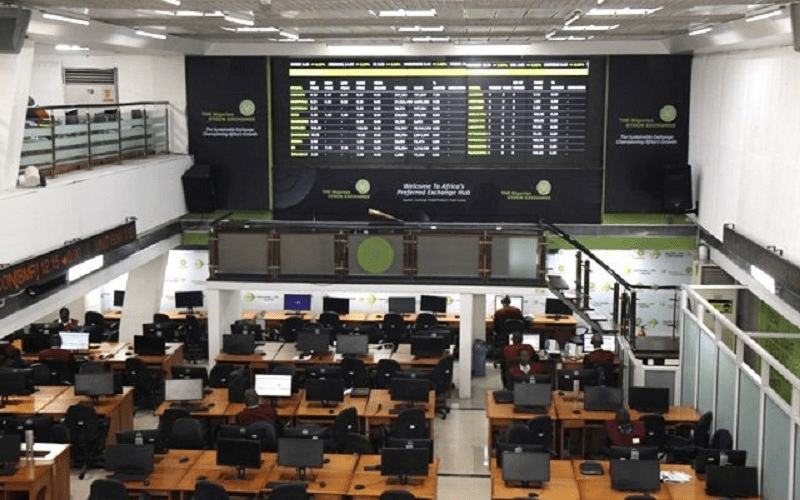Emmanuel Addeh in Abuja
After two years of sluggish performance, Nigeria’s gas sector has rebounded in 2025, recording a 11 per cent increase in total production and notable gains in domestic consumption, according to latest data from the Nigerian Upstream Petroleum Regulatory Commission (NUPRC).
The figures showed that gas production rose from an average of 6.84 billion standard cubic feet per day (BSCF/D) in 2024 to 7.61 BSCF/D this year, underscoring a recovery driven by renewed government focus on production ramp-up, infrastructure investment, and improved regulatory oversight.
The rebound marks the country’s most significant annual growth in gas output since 2022, when production averaged 6.91 BSCF/D before dipping in the subsequent two years. NUPRC attributed the 2025 recovery to new policy interventions and the operational resurgence of key upstream assets that had previously suffered from underinvestment and logistical constraints.
Beyond higher volumes, domestic deliveries climbed to 27.4 per cent of total production, up from 25.9 per cent in 2024 and 23.9 per cent in 2022, representing a cumulative 14.6 per cent growth in domestic gas allocation within three years.
This rise may not be unconnected with Nigeria’s “Decade of Gas” agenda, which prioritises local gas supply for power generation, industrial feedstock, and residential use.
According to the commission, gas delivered to Nigerian homes and industries grew from 1.65 BSCF/D in 2022 to 2.08 BSCF/D in 2025, a 26 per cent increase, supported by the steady completion of midstream projects such as pipelines and processing plants, allowing more molecules to reach end-users.
“In the past five years, gas operations have demonstrated remarkable resilience and steady growth despite industry-wide challenges. Following a temporary dip in output between 2022 and 2024, gas production rebounded in 2025 to a daily average of 7.61 Billion Cubic Feet per day in response to the many initiatives of the government towards production ramp up.
“This recovery has been matched by the commitment to the domestic market, with gas deliveries rising consistently from 1.65 BCF/D in 2022 to 2.08 BCF/D in 2025, ensuring more Nigerian homes and industries benefit from clean and reliable energy. Export performance also strengthened, recovering from 2.33 BCF/D in 2023 to 2.67/D BCF in 2025, reinforcing our position as a depend-able supplier to international markets.
In the same vein, export performance did not also fare badly despite rising local consumption. Gas sales to international markets accounted for 35.2 per cent of total production in 2025, slightly higher than the 34.2 per cent recorded in 2023 but down from 38.3 per cent in 2022, the data showed.
The modest decline reflected a deliberate policy shift prioritising domestic supply stability over export maximisation, even as Liquefied Natural Gas (LNG) shipments maintained steady output.
At the same time, gas allocated for field and operational use accounted for 30.1 per cent of production this year, a marginal increase from 29.8 per cent in 2024, but slightly below the 32.3 per cent recorded in 2023.
This means some stability in field use, a sign of improved efficiency in gas management and compression systems, with more volumes now being commercially utilised rather than recycled or vented.
Besides, the data showed that gas flaring declined to 7.2 per cent of total production in 2025, the lowest level in more than a decade, down from 7.6 per cent in 2024 and 7.5 per cent in 2022.
In volumetric terms, daily flaring averaged about 0.55 BSCF/D this year, compared to 0.69 BSCF/D in 2021, reflecting a 20 per cent reduction in four years and highlighting industry efforts to achieve zero routine flaring by 2030.
Equally, the data showed that overall export and domestic markets jointly absorbed over 62 per cent of total production this year, up from 59.9 per cent in 2023, indicating that a greater share of produced gas is now commercially deployed rather than wasted or recycled in the field.
The regulator’s report described the sector’s recovery as evidence of “remarkable resilience and steady growth despite industry-wide challenges,” citing fiscal reforms under the Petroleum Industry Act (PIA) and targeted government initiatives to accelerate gas infrastructure delivery.
“Equally important is the progress in environmental stewardship. Gas flaring has been reduced from a daily average of 0.69 Billion cubic feet per day in 2021 to around 0.55 Billion cubic feet per day in 2025, even as production increased, underscoring our drive towards zero routine flaring by 2030.
“The above further supports the fact that the commission remains committed to driving policies and regulatory oversight that promote gas development, enhance energy security and support Nigeria’s transition towards a cleaner and more sustainable energy future,” the NUPRC said.





